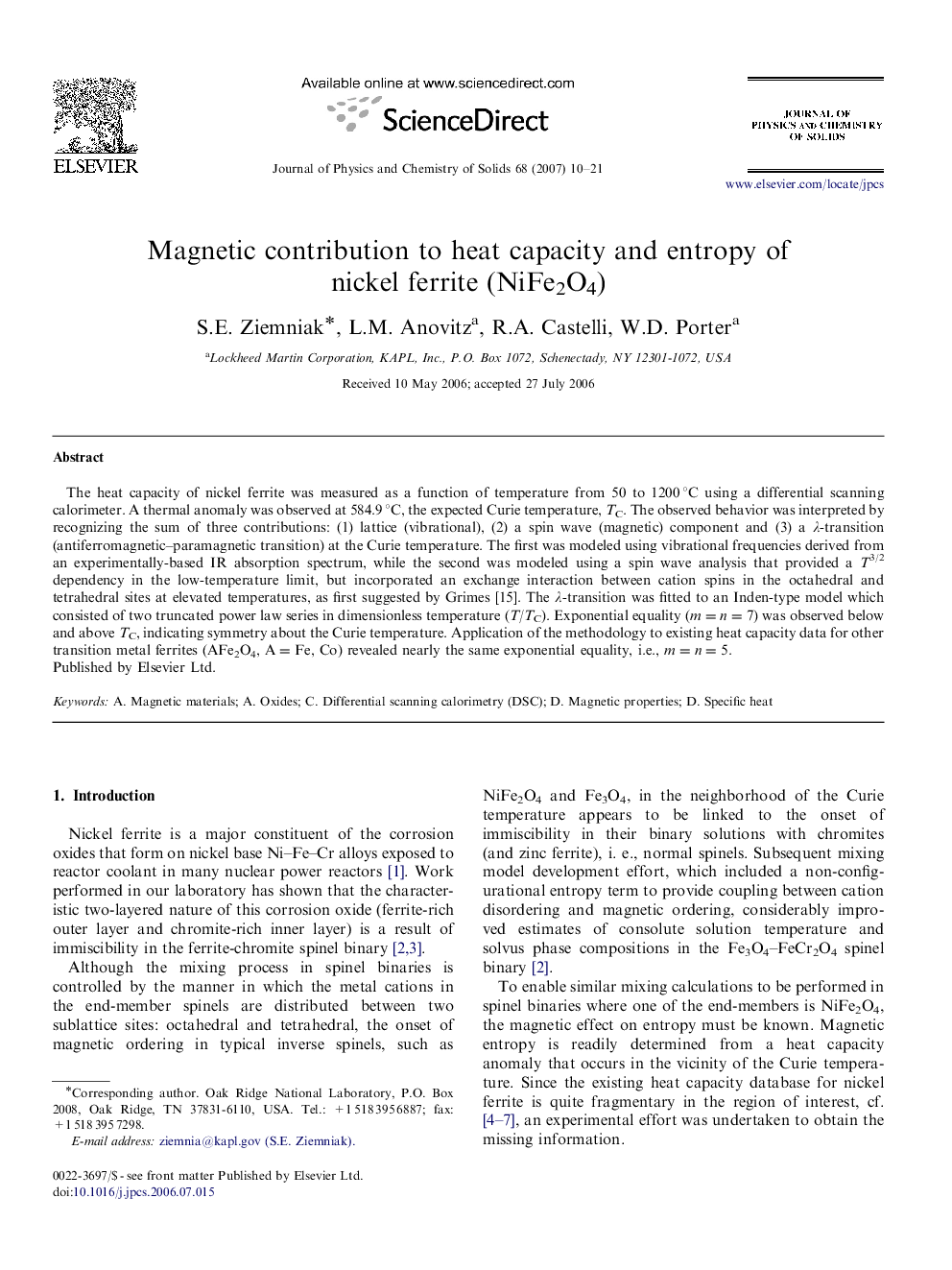| Article ID | Journal | Published Year | Pages | File Type |
|---|---|---|---|---|
| 1519119 | Journal of Physics and Chemistry of Solids | 2007 | 12 Pages |
The heat capacity of nickel ferrite was measured as a function of temperature from 50 to 1200 °C using a differential scanning calorimeter. A thermal anomaly was observed at 584.9 °C, the expected Curie temperature, TC. The observed behavior was interpreted by recognizing the sum of three contributions: (1) lattice (vibrational), (2) a spin wave (magnetic) component and (3) a λ-transition (antiferromagnetic–paramagnetic transition) at the Curie temperature. The first was modeled using vibrational frequencies derived from an experimentally-based IR absorption spectrum, while the second was modeled using a spin wave analysis that provided a T3/2 dependency in the low-temperature limit, but incorporated an exchange interaction between cation spins in the octahedral and tetrahedral sites at elevated temperatures, as first suggested by Grimes [15]. The λ-transition was fitted to an Inden-type model which consisted of two truncated power law series in dimensionless temperature (T/TC). Exponential equality (m=n=7) was observed below and above TC, indicating symmetry about the Curie temperature. Application of the methodology to existing heat capacity data for other transition metal ferrites (AFe2O4, A=Fe, Co) revealed nearly the same exponential equality, i.e., m=n=5.
